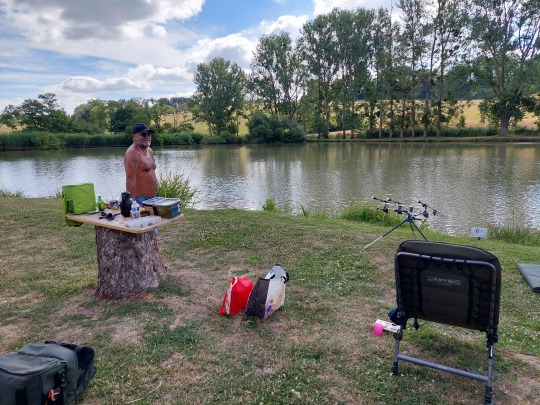#altvils
Text
Summary: Chapters 5-7 of Critical Intersex
After our first foray into academic intersex studies, people were curious for more, so for November we read a subset of the edited volume Critical Intersex. It was published in 2009 and was edited by Morgan Holmes, an intersex sociologist. We read Chapters 4-7.
As it turned out, Chapters 5-7 were all fairly similar - they all went over the modern-era history of intersex from a legal/bureaucratic perspective in The Netherlands (Ch 5), and Germany (Ch 6 & 7). Chapter 4 was on the history of the Intersex Society of North America.
We’re gonna split the book/discussion summary into two posts - this one for Chapters 5-7 and a separate post for Chapter 4.
First, some quick summaries of the chapters:
Ch 5: Do I Have XY Chromosomes? By Margriet van Heesch
This chapter provides a history of how AIS has been treated by doctors in the Netherlands from the 1880s to the 2000s. Treatment models changed several times during this time period, affected by shifting scientific understanding of the basis of sex as well as social changes in the late 20th century towards greater informed consent
An important shift happened in the 1960s: a new treatment model for intersex emerges, led by John Money at Johns Hopkins University in the USA. This posits that gender identity is a result of genital appearance and parenting in the early years’ of an infant/toddler’s life. They believed that the clinical goal should be to “erase all doubts about the sex of children with intersex conditions” (p123)
All three of the chapters talk about this paradigm, but none of them use a pithy name for it. As it turns out there is a name for it; its practitioners called it the optimum gender rearing model, or OGR model.
Heesch explains how the OGR model led to a dynamic where Dutch doctors would “protect” AIS women from learning that they have XY chromosomes. Women would AIS would still sometimes find out, by accident or through a lot of digging, and Heesch’s chapter focuses on interviews and life stories of women with AIS who were treated this way.
Interestingly, John Money himself argued “‘in all cases of genital deformity, whatever the diagnosis and whatever the rearing, it is psychologically advantageous to be straightforward and honest in talking with the child about the facts of his or her condition’” (p 133) - emphasis ours.
This part of Money’s treatment model did not make it into Dutch practice. Money was fairly accepting of homosexuality, whereas Dutch doctors openly declared a “wish to make intersex children into happily married adults … Medical prevention of homosexuality became disguised as the medical prevention of social problems.”
Heesch also interviewed women with AIS and relays their life stories. The stories are fairly grim and the usual sorts of stories about AIS (e.g. removing “cancerous tumours”). Notably, the women who did find out about being intersex expressed a desire to meet other women with the same condition (p138) in contrast to doctors’ approaches to hide information and connections from their patients.
Ch 6: Intersex, a Blank Space in German Law? By Angela Kolbe
In Germany, “there is no law to define what a man is, what a woman is, or how many sexes exist. the legal system simply assumes an obvious distinction between male and female, and structures laws to acknowledge only two sexes.” (p147)
As such, you cannot register a baby as as intersex, rather than female or male, on a birth certificate.
Interestingly, German law used to include a category for altvil, which Kolbe translates as “hermaphrodites”. The altvil were in German law as early as the Sachsenspiegel of 1230. The Sachsenspiegel encoded that “hermaphrodites, dwarfs and imbeciles could inherit neither land nor titles” (p149).
Kolbe then goes over a history of different laws and what they had to say about intersex people. Overall the picture is that intersex people had more limited rights than perisex people. Multiple historical laws set forth a “preponderance rule”, to assign intersex people to a binary gender based on the preponderance of sex characteristics; these laws encoded who was to make this determination and when.
Some laws (such as a law in 1794 Prussia) granted a right of choice: the intersex person (or their parents) could choose which binary gender they should be, and make a blood oath binding them to this gender. (Some laws penalized breaking this oath.)
After going through the history, Kolbe then explains the present situation in Germany. The legal challenges from intersex people, and the unwillingness of the German government to deal with it.
Kolbe describes a court case in Colombia that set a new standard: they denied the parental right to consent to surgery on intersex infants. “The court found that the parents did not really understand the implications of the operation on their child’s life.” (p159) and created a new model of “qualified and persistent informed consent”.
This Colombian model was a compromise between abolishing infant surgery and allowing parents to consent to surgery on behalf of their children - it required doctors to provide detailed information to parents, and it needs to be authorized in stages that are spread out to give “parents time to establish bonds with their child the way s/he is, and not to make a prejudicial decision based on shock at the baby’s appearance” (p159)
Kolbe discusses the Colombian model as a possible way forward for Germany, and then discusses other possible ways forward for Germany - should they make a legal third sex category? Or try to abolish gender categories in the law entirely? Kolbe details how gender is currently involved in German law and how it could be removed.
Ch 7: Who Has the Right to Change Gender Status? Drawing Boundaries between Inter- and Transsexuality by Ulrike Klöppel
In post-war Germany, the standard was to let intersex people pick their gender assignment - for infants with ambiguous sex at birth, they were given a provisional assignment. There was a clear commitment to defer plastic and hormone surgery until the intersex patient could decide what they wanted.
Klöppel documents how the “subject orientated” policy emerged in the early 1900s. Klöppel gives a history of medical treatment models in Germany, and how the subject-oriented model eventually lost out to the OGR model promoted by John Money.
Klöppel then provides a history of how trans people have been understood by German doctors, and common ground in how both trans and intersex were negatively impacted by laws that required all Germans to have a binary and unchangeable legal sex marker.
Klöppel discusses the role doctors have played in pushing back on these laws, the relationship between the law and medicine, and the history of relevant legislation in Germany in the 20th century.
Shifting now into our book club discussion...
High-level Reactions To These Chapters
Elizabeth (Eliz): I already knew the basic timeline of the social construction of sex, so that wasn't new to me. But it was new to me that the Netherlands and Germany would be so different. The doctors lying to their patients was really something. And then the Germans being like, "yeah, the intersex person gets to pick their gender!" I wasn't expecting such differences between such similar countries.
Michelle (M): I come from a medical family background, so medical ethics are familiar to me, but the concept of simply not telling a patient what they were diagnosed with is horrifying to me.
ei: i honestly didn't read very much, and there wasn't anything in particular i wanted to discuss. mostly just interested in listening in on you guys' discussion!
Doctors
Eliz: The chapters were emotionally difficult to read; reading about doctors being paternalistic is never fun. It was interesting that John Money, the guy associated with infant surgeries, advocated being open and honest with the intersex children and what had happened to them. I still don’t know what tests were done on me as an adolescent and it’s been a barrier in my care to this day.
Eliz: Another thing about the chapters is the importance physicians have on surveilling intersex people. The DSD model frames intersex as a lifelong model that requires surveillance and intersession by a team of healthcare workers.
ei: doctors HATE when intersex people are queer or trans or "weird" in another way. They expect us to all be cishet and as "normal" as possible, and that ofc includes forcing "treatments" to erase our intersex traits! I hate when i look up my variation and get hit with "men with (variation)"
Eliz: yeah doctors have appointed themselves into the job of surveilling intersex people to make sure we never deviate
M: it's gender as a police state. "You're already a recidivist. Don't you dare worsen your condition!" It's probably why doctors hate when patients band together in case "these intersex people get wrong ideas."
ei: yeah. my gender has always been seen as a medical issue, specifically one to be "corrected". i've fought consistently against so many medical "treatments" that are meant to make me more similar to a perisex person
Eliz: yeah I noticed how in one of the chapters (Ch 5) the author was like “why didn’t the doctors tell the patients how to connect with people with the same condition?” given all the evidence it’s beneficial for intersex people to do so, and how the people that author had interviewed had - upon finding out they were intersex - immediately wanted to meet others with the same condition. I don’t know if the author had been asking rhetorically but it feels like the answer is because doctors are scared if we talk to each other we might realize we’re being mistreated.
ei: I think also, they don't want intersex people to feel like their variation is okay. they want to maintain the Medically Fucked Up narrative, and they don't want us meeting other intersex people because we might realize that being intersex is normal, natural, and okay.
Eliz: yeah doctors don’t want to give up control. I liked this line in Ch 6: “in current legal and political developments the issue of intersexuality, although still quite unknown, has stepped out of the silence into which medical science had banished it”
Ableism and Eugenics
Eliz: I thought the link between intersexism and ableism going back so long was fascinating. Like how in the 1200s, people who were intersex or disabled couldn't inherit land.
M: And like, with intersex people, I think there's a fear that - forgive the ableist language - we could "breed more freaks!"
Eliz: it’s super eugenicist
M: It always comes back to eugenicism!
Surveillance and Technology
Eliz: these chapters have a big theme of surveillance. The DSD model putting doctors in the role of surveilling us intersex people to ensure the conformity of our genders and sexual orientations. And this was interesting for me because that this isn't the issue I'm used to thinking of when it comes to surveillance and intersex. So many surveillance technologies like facial recognition or whatever assume a sex or gender binary, so technologies don't work right on intersex people because they're not designed for us. There's just ways in which a lot of technologies assume a binaristic, dyadic view of humanity that are quite hurtful.
Eliz: Chapter 7 reminded me of this paper I have really ambivalent feelings about, by a Science and Technology Studies (STS) named Mar Hicks. The paper is about how the computerization of the British Census made gender more difficult. For a long time, you could write whatever gender you wanted, and no one could reaaaally keep track. So if you transitioned, and presented yourself as a new gender when you moved, there weren't really birth certificates; people just had to take you at your word. The paper shows how technology changed this. I have mixed feelings about Hicks’ paper because there is zero mention of intersex people in it. Hicks is trans. It’s really frustrating to me how intersex people just don’t exist at all in the minds of perisex people, and this is a really frustrating oversight in Hicks’ work.
Questions about the authors
Eliz: I did wonder how many of the authors of the book chapters were intersex; they read more perisex because of referring to the intersex community with "they" and "them" language instead of “our”. If the authors of these three chapters were intersex they were doing a weird pretend-distancing thing that I dislike seeing in academic writing. It's also possible that the book wasn't as intersex-authored as you'd expect from the title.
M: not me forgetting that academic textbooks have multiple authors!
Eliz: I don't know why so much of this scholarship is German! More Germans! Why? But I'm fascinated. What led to Germans being the leaders on intersex studies?
Jurisprudence, law, and politics
Eliz: Thinking of the chapters that were saying in the premodern era intersex people were just asked to decide what they gender wanted to be, and do a blood oath, like "this is my gender now!" As opposed to slotting you into female or male FROM birth, and experts need to be called in on which way you're going to go. The emphasis on trying to predict gender from birth feels so deeply counter productive. And because it’s so flimsy it requires all this extra work to enforce it.
Eliz: The Columbian compromise was surprisingly reasonable. There were still surgeries on children, but it was more acceptable, so I was kind of impressed. Good job, legal jurisprudence system.
M: You were adequate!
Eliz: One thing -getting more into ch 4 - there are a handful of countries that have banned intersex surgeries - like Greece - and I'm really curious to know how that happened, especially after ch 4, about the history of American intersex activism. What happened in Greece and Spain that was successful, in a way that hasn't been in these other countries, is something that I'm really itching to find out.
Germany
M: My feelings about the chapters were that there was a real simmering fury about sexual binarism in Germany. It seemed like a good opportunity for nonbinary and intersex people to have kinship and allyship there. I've come to identify more as a nonbinary person; I've always hated the word "woman," and that feels very connected to my intersexuality.
Eliz: there was this idea in the chapter that intersex people were just casualties of sexism that I didn't really like. I would have liked a lot more about the path forward with an X or I marker, rather than just removing gender categories altogether. I was also a bit "ehhhh" about the author dismissing Affirmative Action?! It's controversial, people don't like it, but it works! I felt that needed to be fleshed out more
Eliz: By the way, I looked it up, and Germany did legalize same-sex marriage in 2017.
M: that feels late!
ei: crazy that people think europe is like so progressive but then germany didn't even legalize gay marriage until after the united states
Germany since 2009
Bnuuy, who is German, gave us a very detailed update on what has happened in Germany since the book was published in 2009. Here’s a very brief summary of Bnuuy’s infodump, which you can read in the #23-11-critical-intersex channel on our discord:
Some court cases led to the courts ordering changes to the system to improve things for trans/intersex people, but German legislators absolutely failed to uphold the spirit of the constitutional rulings. The politicians have created a system that does the bare minimum of what the court ruled that in practice makes it incredibly difficult for trans & intersex people to change their gender markers.
Legal sex marker change for trans people still requires sterilization and to sue to have a court recognize your gender change. The government is not allowed to out you as trans if you go this route. Whereas if you go the pathway intended for intersex people, this right isn’t there; the government can out you as intersex.
The intersex pathway to sex marker change requires a doctor to write in your favour, and the government can’t check it. A diagnosis is required, and it’s not even for “intersex”, it’s for the German translation of DSD.
So a lot of trans people use the intersex pathway, since the doctor can write down ANYTHING to make it count as “intersex”. For nonbinary people it’s a real roll of the dice in the courts, and generally easier to go the route of “intersex”. It’s a super broken system.
Bnuuy conveyed a deep feeling of frustration with German politicians for failing to do right by their trans & intersex constituents, and the frustration in more progressive politicians making big promises to fix the system and then not delivering at all.
Bnuuy also had an important PSA to make which is when you hear news that a foreign country has made some legal/political victory for queer people actually read about it - too many people see that Germany has blank and “diverse” on the books for gender markers and think these options are actually available to genderqueer & intersex people, but they’re not actually.
Our discussion continues here for chapter 4.
#intersex#intersex studies#queer theory#intersex book#gender studies#sociology#legal studies#book reviews#book summaries#intersex rights#lit review#critical intersex
4 notes
·
View notes
Photo




🚶🚶♀️ Sortie pédestre du lundi 25 juillet au départ de Valmont : 22 marcheurs au départ de Valmont pour un circuit de 11,5 km avec un soleil radieux. Une balade qui a conduit les marcheurs vers Altviller , puis Lachambre et pour finir en passant par les jardins ouvriers de Petit-Ébersviller
Prochaine sortie, NOUVEAU DÉPART : lundi 1er août à 9h sur le parking de l'école de Folschviller, situé derrière l'église.
1 note
·
View note
Photo

© Carina Klinger 2014 deviantArt • tumblr • instagram
#vils#altvils#bavaria#germany#walchsing#tree#trees#nature#sunset#ice#icy#cold#winter#autumn#forest#reflection#rural#water#river#lake#sky#evening
2 notes
·
View notes
Text
@bart_io @CoinbasePro @Trading_Tech What's in all about? New hope in the air in altville?
@bart_io @CoinbasePro @Trading_Tech What’s in all about? New hope in the air in altville?
What's in all about? New hope in the air in altville?
— Patrick Rooney (@patrickrooney) January 16, 2020
https://platform.twitter.com/widgets.js
from Twitter https://twitter.com/patrickrooney
View On WordPress
1 note
·
View note
Photo


🚶🚶♀️ Sortie pédestre du lundi 11 juillet au départ de Valmont : 25 marcheurs accompagnés de Yann ont réalisé une belle balade vers Altviller puis les marais de Lachambre un véritable havre de tranquillité 12 km et 2h45 de randonnée. Prochaine sortie : lundi 18 juillet à 9h sur le parking du cimetière à Valmont.
0 notes
Photo

30 MARCHEURS AU DEPART DE VALMONT SE MATIN A 8H30 ;;BELLE RANDONEE AVEC UN TEMPS SUPER ,,POUR PARTIR SUR ALTVILLER VOIR LA PIERRE TOURNANTE LES 30 RANDONNEURS ETAIENT RAVIES DE CETTE MARCHE
0 notes
Photo

DANS LES ENVIRONS D’ALTVILLER SE TROUVE UNE PIERRE TOURNANTE QUE LA TRADITION RAPPORTE A L’EPOQUE CELTIQUE OU AU MOINS GALLO ROMAINE. CETTE PIERRE COMPOSE D’UNE ROCHE DOLOMITIQUE POSSEDAIT UN VOLUME CONSIDERABLE. RIEN NE LAISSE SUPPOSER EN LA VOYANT LES TERRIBLES SOUVENIRS QUI S’Y RAPPORTENT . AUJOURD’HUI ELLE SERT DE LIMITE AUX COMMUNES DE VAHL EBERSING ,,FOLCHVILLER,,ET ALTVILLER
0 notes
Photo

18 MARCHEURS AU DEPART DE VALMONT POUR 12KM UN PASSAGE A ALTVILLER,,LACHAMBRE ,,ET LE RETOUR PAR PETIT EBE VOILA LE PROGRAMME QUE CHARLES NOUS A PREPARER SUPER BELLE BALADE MERCI A NOTRE GUIDE BONNE SEMAINE A TOUS
0 notes
Photo




Sortie pédestre du lundi 12 juin : 31 marcheurs ont parcouru 11 km 500 de Valmont à Altviller en passant par les marais. Le temps était en leur faveur avec de bonnes températures et très peu de vent.
Rendez-vous le lundi 19 mai à 09h au départ du gymnase de Brack, suivi à midi du repas de fin d'année au Campanile.
0 notes
